A 2nd century CE Roman mosaic showing a food still life, currently in the Vatican Museum.
To ask what did the Romans eat?
is to delve into a world of gastronomical diversity.
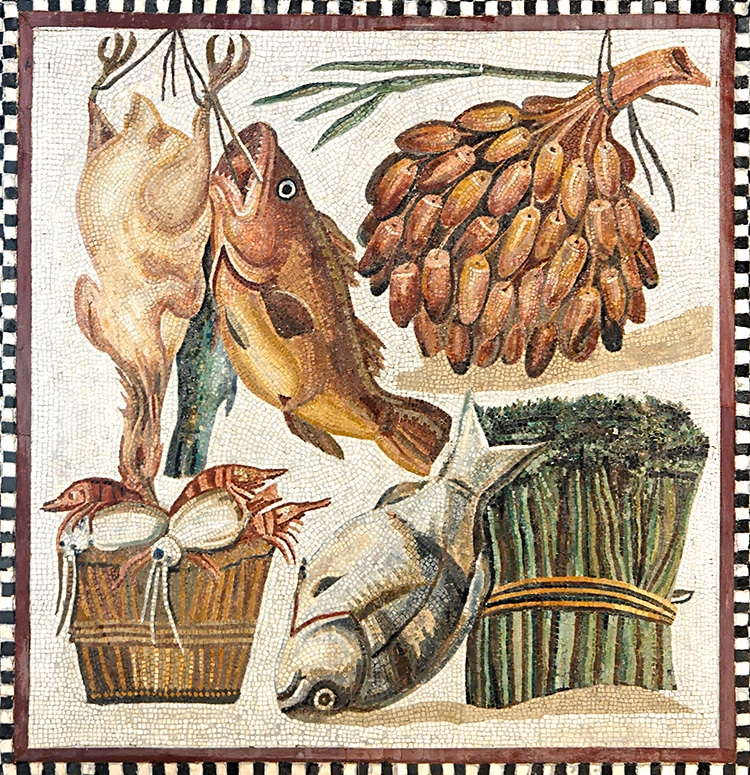
A 2nd century CE Roman mosaic showing a food still life, currently in the Vatican Museum. (Photo:Wikimedia Commons[Public domain])
Across the empire, Ancient Roman food and drink were varied and diverse, but always interesting.
Scroll down for a brief introduction to its culinary history.
Part of everyday life, these casual references to food can be illuminating.
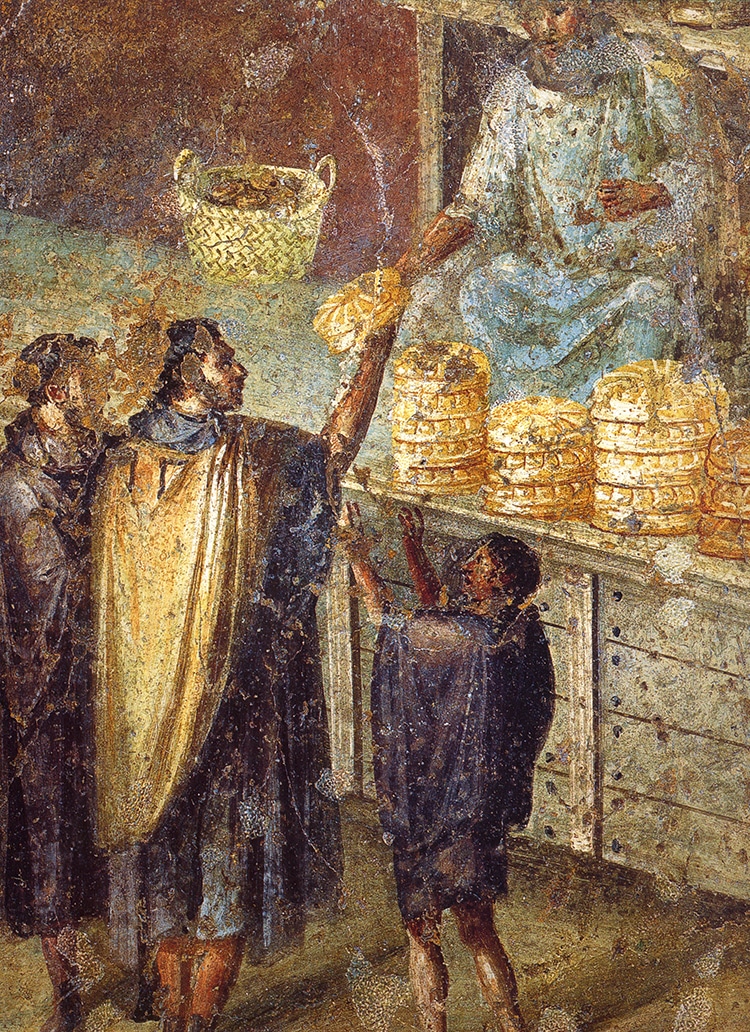
A painting from Roman Pompeii showing customers purchasing bread from a vendor at a market or street stall, held at Museo Archeologico Nazionale di Napoli. (Photo:Wikimedia Commons[Public domain])
There are also Roman texts addressing food and drink, such asmedicinal textsrecommending concocted treatments.
An ancient Latin cookbook known asApiciuswas compiled during the first few centuries CE.
The recipes listed include poultry, seafood, vegetables, and other ingredients.

Roman 1st century BCE silver tableware from the Tivoli Hoard. (Photo:The Metropolitan Museum of Art[Public domain])
For adventurous cooks, the cookbook is free to explore in its entirety throughProject Gutenberg.
Roman Mealtime
Roman 1st century BCE silver tableware from the Tivoli Hoard.
On the handle is a spotted panther (associated with the god Dionysus).
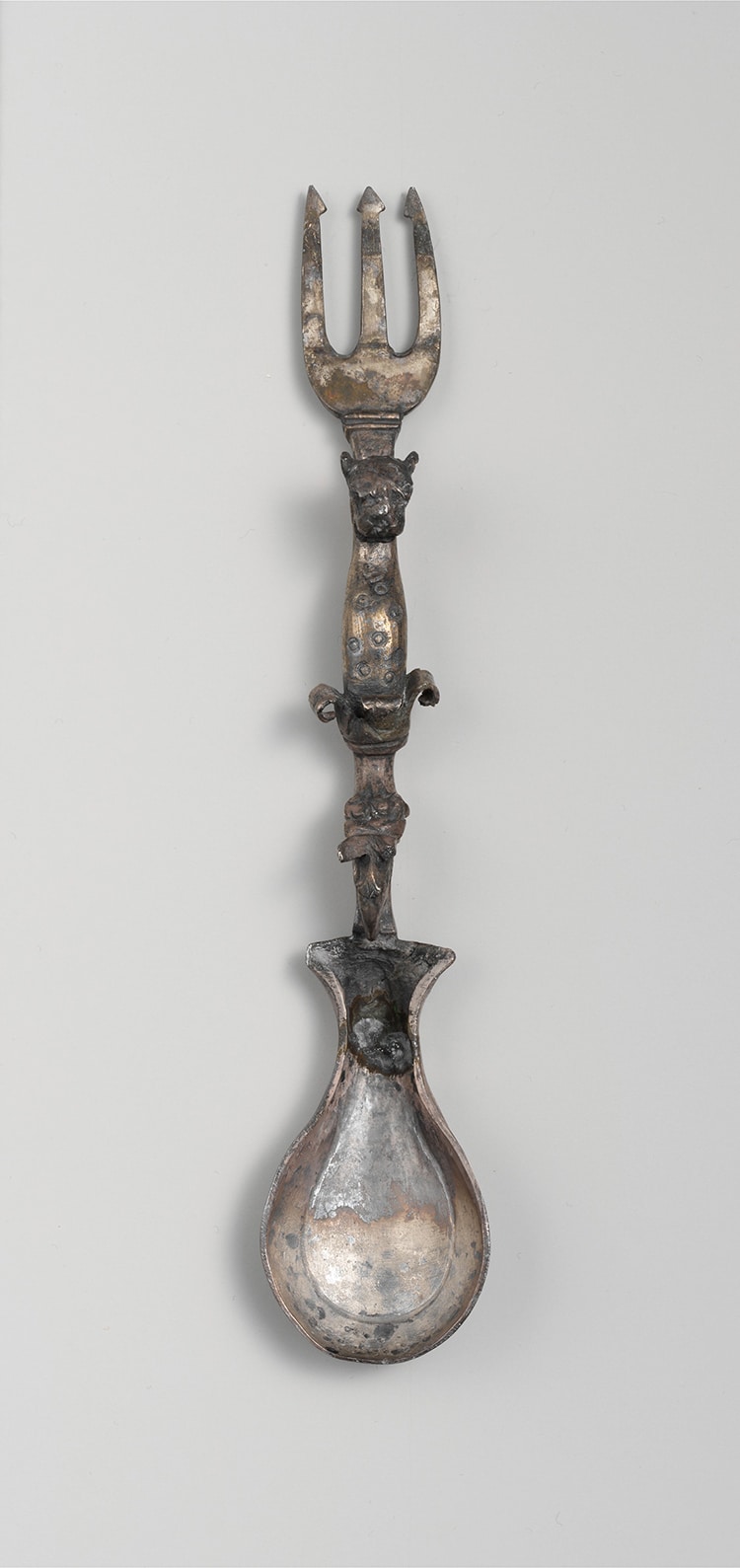
A sculpted silver spoon and fork combination utensil from the 3rd century CE. On the handle is a spotted panther (associated with the god Dionysus). (Photo:The Metropolitan Museum of Art[Public domain])
However, dining in such establishments was typically a lower-class activity.
Working people lacked the massive kitchens and chefs of the wealthier households.
What food was eaten?
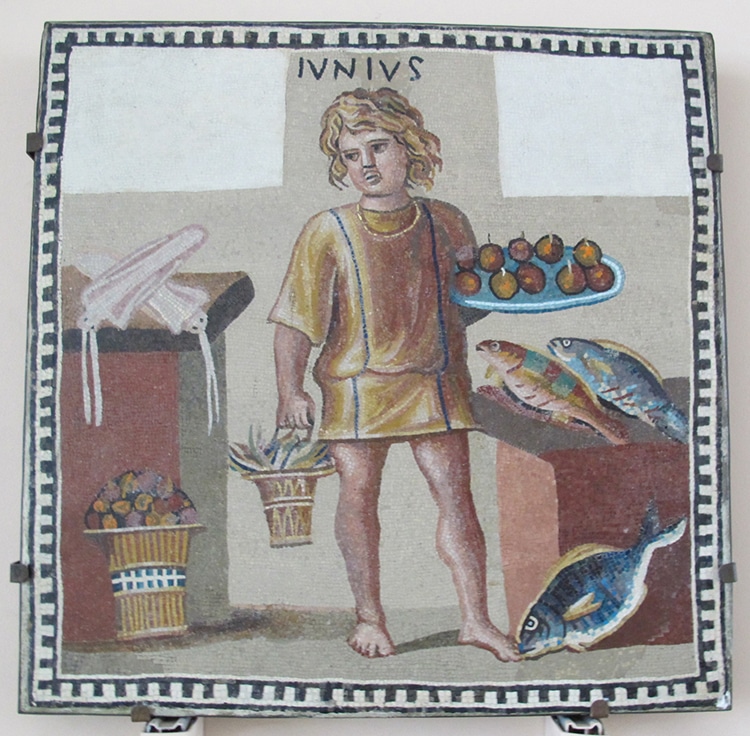
A 3rd century CE mosaic showing, fish, squid, fruit, and (it seems) crabs. (Photo: Sailko viaWikimedia Commons[CC BY-SA 3.0])
A 3rd century CE mosaic showing, fish, squid, fruit, and (it seems) crabs.
In the case of the last delicacy, such indulgence was even forbidden undersumptuary laws.
Both soft and hardcheeseswere Roman dietary staples.

A still life fresco showing eggs and fowl from the House of Julia Felix in Pompeii. (Photo:Wikimedia Commons[Public domain])
More shelf-stable and transportable than milk, cheese prices were at times fixed by the emperor to ensure affordability.
Goat and sheep’s milkcheeseswere made with rennet, while in northern provinces cow’s milk was also used.
Many of theancient cheese recipescan still be reproduced today.

Bread found at Pompeii, preserved by the layer of volcanic ash. (Photo:Stock Photosfrom LESZCZEM/Shutterstock)
Cereals and Bread
Bread found at Pompeii, preserved by the layer of volcanic ash.
Breadwas an important use of cereal crops.
Urban people purchased large quantities of bread from professional bakers.

A fresco of fruit in the House of Julia Felix at Pompeii. (Photo:Wikimedia Commons[Public domain])
Darker, coarser loaves of barley or emmer wheat were more affordable.
Those with larger budgets could purchase finer, white flour loaves.
The wealthier citizens could also purchase breadsenrichedwith milk, eggs, or butter.
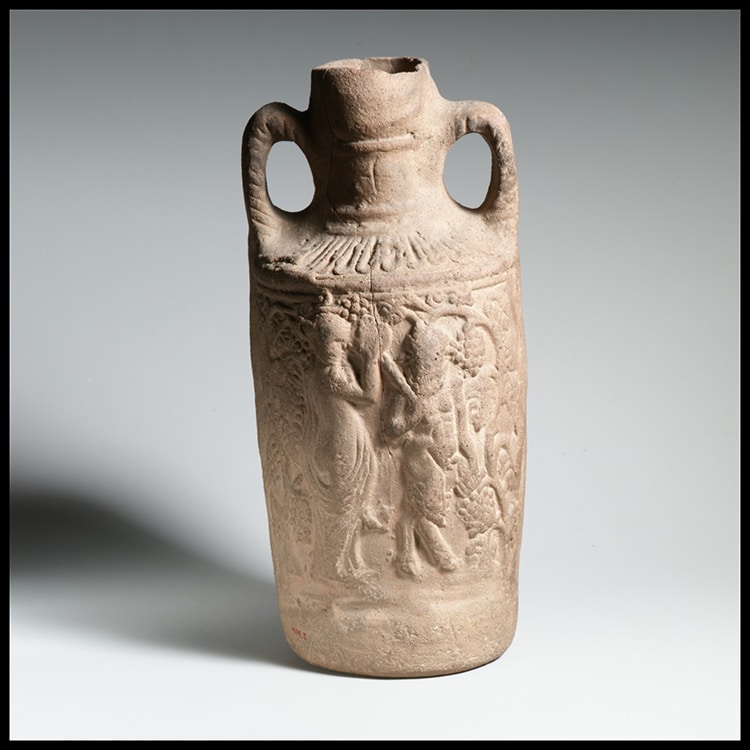
A Roman terracotta amphora (jug) from Cnidus, in modern day Turkey. Crafted in the 2nd or 3rd century CE, the raised details show the god Dionysus with grapes. (Photo:The Metropolitan Museum of Art[Public domain])
This ephemeral, everyday food has been preserved for 2,000 years.
Fruits and Vegetables
A fresco of fruit in the House of Julia Felix at Pompeii.
(Photo:Wikimedia Commons[Public domain])
Romanvegetableoptions were also vast.

A Roman terracotta wine amphora from 100 BCE. This example comes from a Roman sunken ship which was carrying wine to Gaul. (Photo:The Metropolitan Museum of Art[Public domain])
Vegetables could be cooked, pickled, or eaten in dressed salads.Legumeswere another prominent component of Roman diets.
The Romans grew peas, beans, and lentils on crop-rotation systems to maximize soil productivity.
An especially prominent part of lower-class diets, vegetables often also comprised the starter courses of upper-class banquets.
What did the Romans drink?
A Roman terracotta amphora (jug) from Cnidus, in modern day Turkey.
Crafted in the 2nd or 3rd century CE, the raised details show the god Dionysus with grapes.
However, traditions of beer brewing existed in the provinces of the empire.
Beer had long been brewed inEgyptbefore the Roman occupation and traditions seem to have also existed inpre-Roman Britain.
Wine
A Roman terracotta wine amphora from 100 BCE.
This example comes from a Roman sunken ship which was carrying wine to Gaul.
Unlike today, the ancient Romans usually drank diluted or flavored wine.
Although sweet white wines were especially popular, any wine could be flavored with a variety of ingredients.